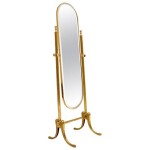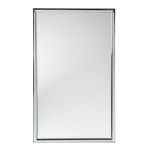How Do I Mirror My Phone To a Non-Smart TV?
Mirroring a phone's screen to a non-smart TV opens up a world of possibilities, from sharing photos and videos with family to enjoying mobile games on a larger display. While smart TVs often have built-in mirroring capabilities, non-smart TVs require a few extra steps. This article explores several methods for achieving this, outlining the necessary equipment and providing step-by-step instructions.
Using HDMI Adapters
One of the most reliable methods for mirroring a phone to a non-smart TV involves using an HDMI adapter. This involves connecting a physical cable from the phone to the TV's HDMI port. Users need an adapter compatible with their phone's connection port, whether it's USB-C, Lightning, or micro-USB.
To use an HDMI adapter, plug the adapter into the phone's charging port. Next, connect a standard HDMI cable to the adapter and the TV's HDMI input. Select the corresponding HDMI input on the TV using the remote. The phone's screen should then mirror onto the TV. Some phones may require enabling specific settings within the display or connection options for the mirroring to function correctly.
Wireless Casting with Streaming Devices
Streaming devices offer a wireless solution for mirroring, especially for those who prefer to avoid cables. Devices like Chromecast, Roku, Amazon Fire TV Stick, and Apple TV can transform a regular TV into a smart TV, offering screen mirroring functionality.
To utilize streaming devices for mirroring, ensure the device and the phone are connected to the same Wi-Fi network. Specific instructions vary depending on the device and phone operating system. Generally, the process involves selecting the casting or mirroring option within the phone's settings and choosing the streaming device from the list of available devices. The chosen content or the entire phone screen will then be mirrored onto the TV.
Utilizing Miracast
Miracast is a wireless technology that enables screen mirroring between devices. Some non-smart TVs include built-in Miracast support. Users can check their TV's specifications or user manual to determine compatibility. Using Miracast doesn't require an external streaming device or an internet connection.
To mirror with Miracast, enable the Miracast feature on both the TV and the phone. On the phone, navigate to the display or connection settings and select "Wireless Display," "Cast Screen," or a similarly named option. Choose the TV from the available devices. The two devices will establish a connection, mirroring the phone's display onto the TV.
Connecting through a Laptop or Computer
Another option is to connect the phone to a laptop or computer and then use an HDMI cable to connect the laptop to the non-smart TV. This method essentially uses the laptop as an intermediary device.
Connect the phone to the computer using a USB cable. Ensure the appropriate drivers are installed on the computer to recognize the phone. Some phones may require specific software to facilitate screen mirroring. Open the mirroring or screen sharing settings on the computer. Connect the computer to the TV using an HDMI cable and select the correct HDMI input on the TV. The phone's screen, or a selected application, should then appear on the TV screen.
Employing DLNA
DLNA (Digital Living Network Alliance) allows media sharing across devices on a home network. While not technically screen mirroring, DLNA lets users stream photos, videos, and music from their phones to a DLNA-compatible device connected to the TV, such as a Blu-ray player or game console.
To utilize DLNA, ensure that the phone and the DLNA-compatible device are connected to the same Wi-Fi network. Use a DLNA-enabled app on the phone to browse and select the media to be streamed. Choose the DLNA device connected to the TV as the target. The selected media will play on the TV.
Leveraging Analog Methods
For older phones and TVs, analog methods like composite or component cables can be used. This involves connecting the phone to the TV using specific cables and adapters. These methods often provide lower resolution compared to digital solutions.
Locate the appropriate AV output port on the phone. This might require a specific adapter depending on the phone's connection type. Connect the appropriate cable (composite or component) to the adapter and then to the corresponding input ports on the TV. Select the correct AV input on the TV. The phone's screen, often with adjusted resolution, will display on the TV.
Choosing the Right Method
The optimal method for screen mirroring depends on the available equipment, budget, and technical expertise. HDMI adapters offer a reliable wired connection, while streaming devices provide wireless convenience. Miracast presents a wireless option without external devices, and DLNA enables media streaming. Analog methods cater to older technology. When choosing a method, consider the specific needs and the available resources to ensure a seamless mirroring experience.

How To Connect Iphone Screen Non Smart Tv Mirror

How To Watch S From Phone Tv Without Hdmi

How To Mirror Your Android Phone A Tv 3 Easy Ways Zdnet

How To Mirror Your Smartphone Or Tablet On Tv Digital Trends

How To Mirror Phone Non Smart Tv Very Easyly

How To Mirror Your Android Phone A Tv 3 Easy Ways Zdnet

How To Watch S From Phone Tv Without Hdmi

How To Connect A Phone Non Smart Tv Wired Wireless Solutions Pointerer Com
How To Cast My Mobile Wirelessly A Non Smart Tv Quora

How To Watch S From Phone Tv Without Hdmi








